Growing grass is not a walk in the park. You need to have in-depth knowledge regarding St Augustine grass vs Zoysia! Many aspects to take care of while performing lawn care should be kept in mind.
Shade tolerance, drought conditions, more frequent mowing, foot traffic, or growth habits are some very important factors. If you think you have taken the right grass in your hand as a good turf grass then you are good to go.
- You may crown St Augustine the winner in terms of maintenance cost.
- Zoysia wins the race in terms of durability and traffic tolerance.
- St Augustine again wins to be the grass to stay green during the winter season.
Contents
A Quick Comparison of St Augustine grass vs Zoysia grass
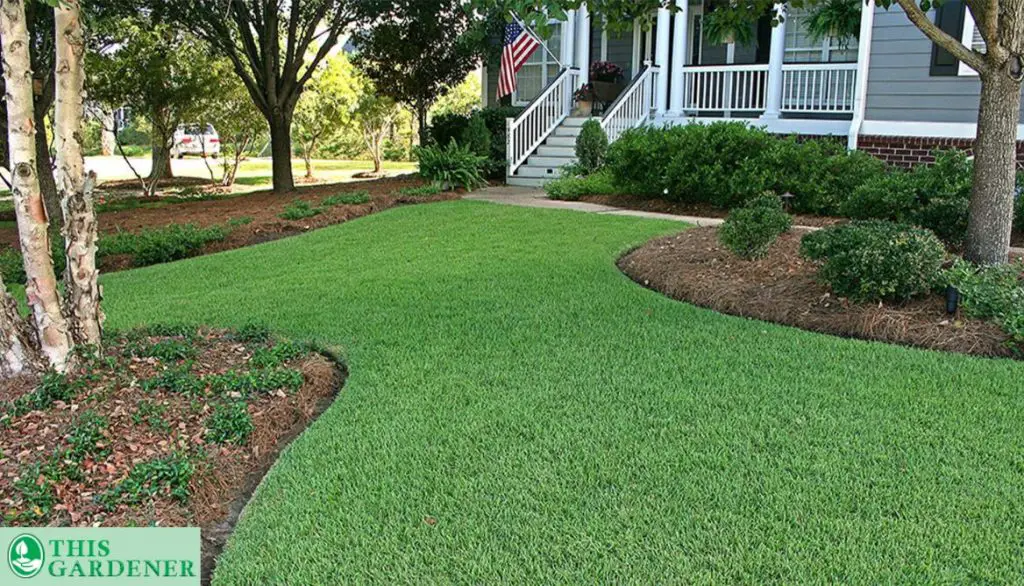
In many domains, each grass is better than the other but that does not mean that you drop the option of the other one. It all depends on your needs as a lawn owner!
- If your lawn undergoes heavy food traffic then Zoysia is the #1 choice!
- If you think that soil may vary in your lawn then St Augustine is the suitable competitor as it survives in various soil types.
- St Augustine is more shade tolerant and suitable for home lawns.
Key Differences Between St Augustine grass vs Zoysia grass
A critical analysis of both turf types can illustrate the differences easily!
St AUGUSTINE:
- Also called Buffalo Grass.
- Warm season grass.
- Grows well in different kinds of soil.
- It is a very attractive grass type.
- The grass is bluish-green in color.
- It grows via stolons.
- Suitable for growth in South California Region and Coastal Climates.
- Needs a good amount of water to grow.
- It is better salt tolerant grass species.
ZOYSIA:
- Highly durable grass type.
- It is known as warm-season grass.
- Handles foot traffic well.
- Stands its ground pretty well after full growth.
- Cannot tolerate shade.
- Demands high maintenance costs.
- Grows via stolons and rhizomes!
- Requires a lot of fertilizer for growth!
- Need consistent irrigation
What is St Augustine grass?
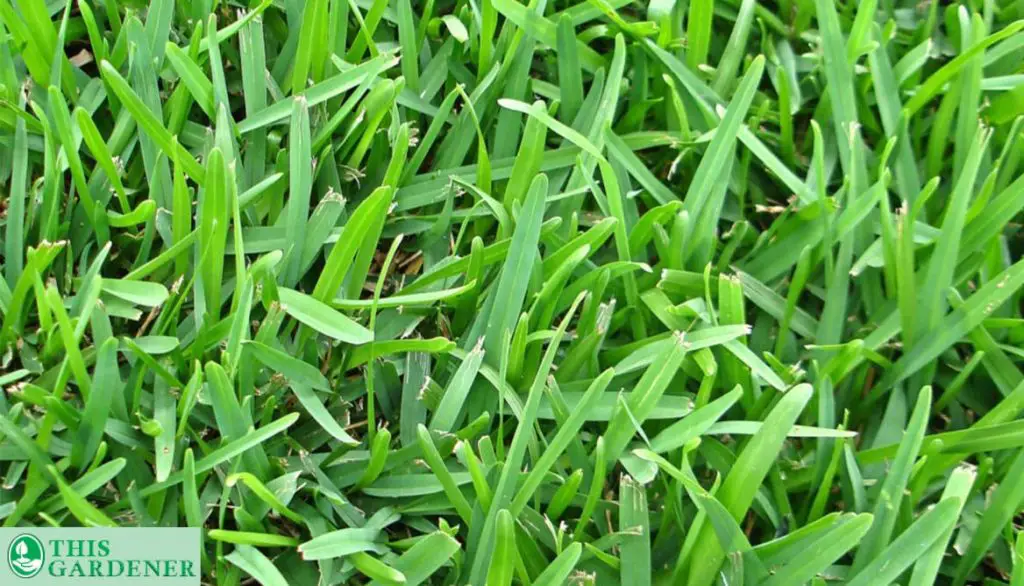
Known famously among the warm season grasses, Augustine grass is one of a kind marvel of mother nature. It is not a force to reckon with as it spreads like wildfire growing through surfaced roots known as stolons.
Identifying St Augustine grass
Want to know about the best bits about St Augustine?
- It has a very distinct coarse texture.
- Rounded tips and broad leaves are notable features.
- The bluish-green coloration of the plantation.
What is Zoysia grass?
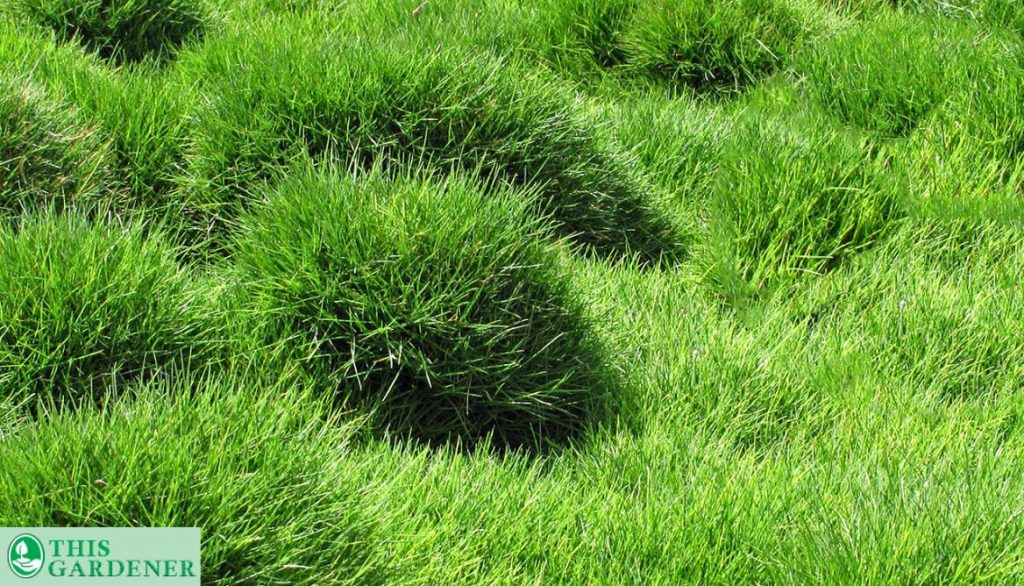
A competitive grass in its own domain, Zoysia grass is among warm season grasses that are one of a kind. They are like that weird kind that doesn’t like playing with others! Yes, they do not go well with other grasses.
Identifying features of Zoysia grass
Let us spot some dominant characteristics of this grass!
- Surprisingly, it spreads via stolons and rhizomes!
- Its body is consisting of fine-quality leaves.
- The coloration of grass leaves is greyish-green.
Comparing St Augustine vs Zoysia grass
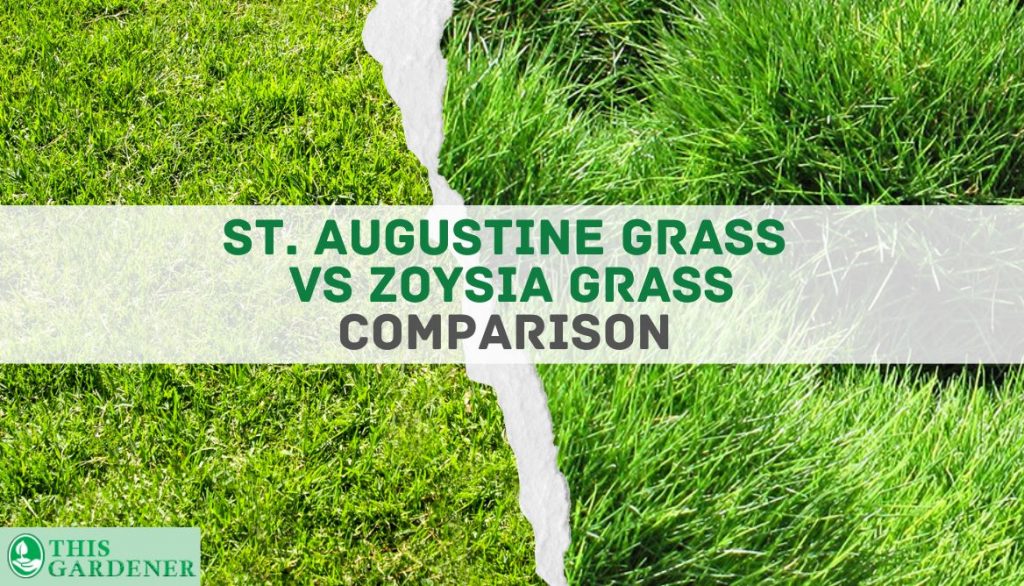
A comparative study can point out many unique traits!
St Augustine Grass:
- Its growth rate seems like it’s cheating mother nature!
- Grows with the aid of stolons above ground.
- It is dense as well as the turf is rich texture-wise.
Zoysia Grass:
- It may seem like an alien out of a movie as it has stolons and rhizomes as modes of growth.
- Zoysia lawns may seem slow growing.
- It has various shades of green such as greyish-green, emerald green, & light green.
Appearance
Looking closely at St Augustine grass, you will note the unique color scheme of bluish-green. Which is one of the most unique combinations among all the other grass types.
The leaf shape is also very distinct having a broad leaf structure with rounded tips. Also, if you feel the leaf surface then a coarse texture can be felt. The stems of this grass are flat!
Zoysia is so unique that you cannot find any other grass that matches it. Especially the greyish-green tinge on the leaves.
Some people will compare it to Bermuda grass but it is a world apart! Zoysia has very fine hair that is present on the tip of the grass. This is totally absent in Bermuda grass.
Weeds, growth and sod formation
Never underestimate the ability of Zoysia grass against weeds. It may be a slow and steady-growing grass but it is resistant to weeds once established.
St Augustine will aggressively compete against weeds. This fast-growing grass is the worst nightmare for weeds. It will choke most weeds.
Best Uses for St Augustine vs Zoysia grass (Wear tolerance and recovery)
Zoysia has excellent traffic tolerance and traffic management. Once it stands its ground then it performs exceptionally and can be used as turf on golf courses.
St Augustine is a grass that has average traffic tolerance and is suitable for average lawns at home. It takes time to get back on its track from damage.
Soil Types and pH Needs
St Augustine will be needing well-drained clay or sandy soil. With a pH of 6 to 7. While a similar pH level of 6 to 6.5 will be sufficient for Zoysia grass grows best in slightly acidic soil types. Poor soils will not be suitable for Zoysia especially!
Water Needs
You will be amazed to know that the water requirement for St Augustine and Zoysia are similar. They both will require 1″ per week watering and be consistent in the coming weeks.
Fertilizer requirements
St Augustine is will show a consistent growth cycle with frequent fertilizing. It demands an average fertilizer quantity and a rich amount of nitrogen as well as phosphorus.
Zoysia on the other hand is very expensive turf to maintain. Its fertilizer requirements are very high as it demands a high amount of nutrients all year round.
Sun, Shade, and Temperature Requirements
You can be at ease if you are a lawn owner and plan to plant St Augustine or Zoysia grass. They are versatile turf that can easily withstand full sun.
Shade is the enemy of Zoysia grass meanwhile taking into account St Augustine grass you can consider it more shade tolerant.
If you want your grasses to grow excellently then consider optimal conditions for them. Zoysia will be happy in 80 Fahrenheit on the contrary St Augustine grass will find 80-100 Fahrenheit as its ideal temperature zone.
Durability
If traffic is your concern then always have a second thoughts about St Augustine grass. It has close to average traffic tolerance.
While Zoysia is an excellent alternative for places that go through heavy traffic. Zoysia might be a slow-growing grass but it can take heavy hits and recover excellently.
Common Pests and Diseases
You can be unlucky when tackling the issue of pests and diseases for St Augustine and Zoysia. Zoysia suffers from pests such as grubs, beetles, &webworms while diseases such as mildew, mold, & fungus are common.
St Augustine is a grass species that are in the view of grubs, beetles, mole crickets, and chinch bugs. And diseases that strike hard on this grass are brown patch and root rot.
Mowing Needs
Zoysia grass lawns demand high attention and need frequent mowing at a length of 1″. Yearly you need to mow it a minimum of 4 times.
An Augustine lawn is extremely hassle-free in terms of mowing. You simply have to mow it to 2″ to 2.5″ mowing height. You can expect it to aggressively grow during the early summer.
Cost of Maintenance
Zoysia grasses are like that spoiled kid that needs everything. Yes! It demands high maintenance costs as it requires fertilizers due to its high nutrient need.
Watering, mowing, & lawn care will cost the most for all those who plan to have a zoysia grass lawn with an emerald green look!
St Augustine grass is much more gentle in this aspect. A 6-8 week fertilization schedule will work perfectly as it is more versatile turf grass.
St Augustine vs. Zoysia grass: Which Option is Right for You?
Brainstorming in this matter will bring you to a crossroads of ideas. You may have to take into account the pros and cons of each of the grasses. Then only you can come to a critical conclusion.
In terms of maintenance, St Augustine wins while in terms of durability Zoysia wins. There are many more aspects that will help you narrow down your choices!
Choosing the Best Option for Climate
Climate is a vital factor when considering turf grass. If you have a Zoysia lawn then consider very hot climatic conditions to be suitable for it but it will turn brown spots during the winter season and remains the same all through.
St Augustine is can grow well in the same temperature range as well as above. But it has the advantage to stay green during the winter season.
Growing zones
Augustine grasses grow in 8 to 10 USDA zones while thriving in sandy soils types as well as clay soils.
Zoysia grasses have an optimum temperature range that starts from 80 Fahrenheit and above. Many species of Zoysia grow in such a temperature range such as Empire Zoysia, Light Green Meyer Zoysia, etc. USDA zones suitable for it are 6 to 11.
Summary: In terms of compatibility of climate between zoysia grass St Augustine, Zoysia loses this battle!
Choosing the Best Option Based on Maintenance
It is evident from the start that who is the winner, St Augustine performs remarkably well in all aspects. Less frequent mowing, soil compatibility (sandy soil/clay soil), & watering. It excels in all areas!
While Zoysia is a pricy turf grass to grow. Especially if you are growing empire zoysia then it is much pricier to maintain it.
Summary: Augustine lawns outperform Zoysia by a very large margin.
Choosing the Best Option Based on Susceptibility to Pests and Disease
In terms of common enemies, both types of grass have the same ailments. Diseases and pests attack both of them very aggressively and you need to frequently spray them with chemicals.
Summary: Make up your mind for anyone while keeping in mind previous advantages!
What are the similarities between St Augustine vs Zoysia grass?
A lot is common in these two very different turf kings. While they can also be very different but some very dominant features make them look like twins!
These common perks in both of these marvels of mother nature make them infamous among grass enthusiasts.
PH Requirement for Augustine Grasses and Zoysia Grasses
If you are worried about the pH levels for Zoysia and St Augustine then do not get stressed out. While Zoysia will be comfortable in 6 to 6.5 so does St Augustine range in a closer pH scale of 6 to 7 reading.
Watering Augustine and Zoysia Grass Lawns
St Augustine and Zoysia are identical in terms of water needs. They can be watered to a maximum of 1″ in a single week. This can be considered an average water requirement.
Pests and Diseases
These grasses are the target of many pests and diseases. They share the same fate in this matter. But only this aspect doesn’t make it a bad turf grass to choose. It has many strong areas where they both shine.
FAQ
Is St. Augustine cheaper than Zoysia
Affirmative! It will not cause a massive dent in your budget at all.
Can you mix Zoysia and St. Augustine?
Nope. Not a good idea to mix them as Zoysia doesn’t go well with other grasses except conditionally with Ryegrass.
Is St. Augustine more shade tolerant than Zoysia?
Augustine grasses are tougher in terms of shade tolerance.
Does Zoysia grass look like St. Augustine?
They look nothing alike. They are like opposites in appearance.
How do you keep St. Augustine out of Zoysia?
Trim it to a shorter height or spray some chemicals to kill it from spreading quickly!
Does Zoysia grass need more water than St. Augustine grass?
Both of them are like buddies when it comes to sunlight. Requiring full sun to grow well.
Conclusion
Each grass type has its own stand-alone perks that make it unrivaled. It all depends on your need and requirement.
We have tried our best to cover all those areas that might help you grow the most aesthetically pleasing lawn. How helpful did you find our article?
Did it add value to your existing knowledge? Share in the comments which grass did you choose for your lawn. We are excited to know about it!
References
- https://www.crabgrasslawn.com/st-augustine-grass-vs-zoysia/
- https://yardthyme.com/lawn-care/grass/st-augustine-vs-zoysia/#Pros_of_Zoysia_Grass
- https://lawnmowerguru.com/zoysia-vs-st-augustine-grass/
- https://lawnmodel.com/zoysia-vs-st-augustine/
- https://thegrassstore.com/types-of-grass/zoysia-grass-types/emerald-zoysia-grass/
- How to Get Potatoes to Sprout Eyes: Detailed Growing Guide with 3 Options - July 31, 2023
- Weight of a Medium Potato: Revealed in Detailed Guide - July 29, 2023
- Maris Piper Potatoes: 9 Substitutes You Should Know About - July 27, 2023
Hello! I’m Jessica Zander, a garden coach and consultant based in the Boston area (zone 6b), offering virtual consultations across the country and Canada.
I’ve been passionate about gardening since the early 1990s, and in 2022, I launched You Can Do It Gardening to empower individuals to feel more confident in their gardening endeavors.
Following a 30-year career in nonprofit finance and operations, I transitioned out of that field in mid-June of 2023 due to the growing demand for coaching services. Interestingly, my years of presenting financial statements to boards and finance committees proved to be valuable experience for teaching people about gardening! I enjoy sharing skills, providing guidance and suggestions, and collaborating efficiently with clients to make significant improvements to their outdoor spaces, both small and large. I also regularly teach at the Arlington Continuing Education and Cambridge Adult Education.
My approach is direct and practical, akin to Mary Poppins, but tailored to your garden. Clients find satisfaction in saving money and taking pride in their own gardening achievements.

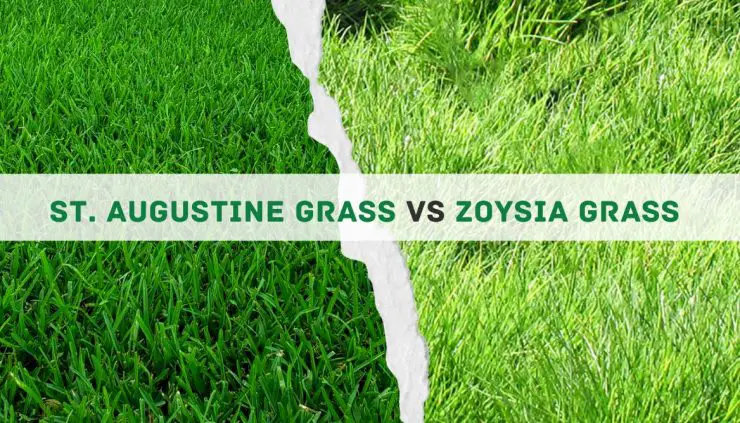
Add comment